#Wicca holiday
Text
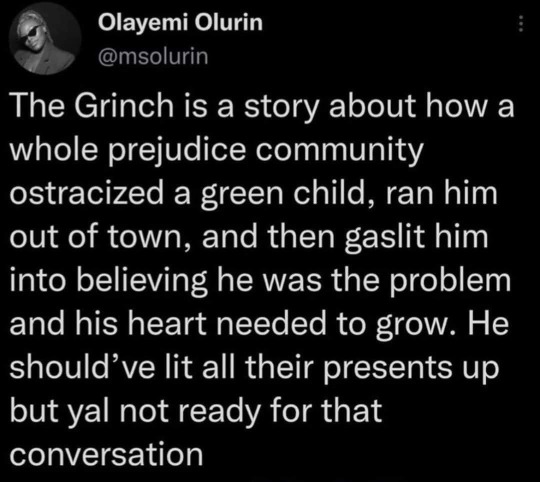
13K notes
·
View notes
Text
Every Pagan Holiday
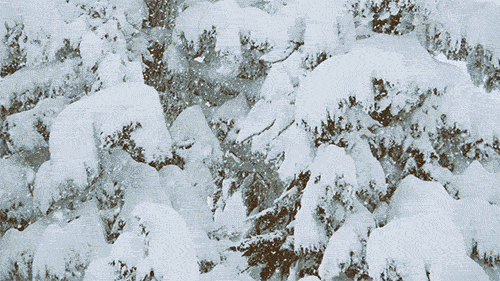
JANUARY
KALENDS
1st January
Origins: Ancient Greece/Rome
Observed by: Hellenic/Roman polytheists
Honouring Janus/Juno, first day of the Year. Kalends brought us the word 'calendar'.
ÞORRABLÓT (THORRABLÓT)
End of January/beginning of February
Origins: Iceland
Observed by: Heathens, Asatru
Midwinter Festival honouring Thor, usually by feasting and poetry.

FEBRUARY
IMBOLC
2nd February
Origins: Celtic polytheism /Ireland, as St. Brigid's Day
Observed by: Most neopagans, Wiccans, Druids, Asatru (as Charming of the Plow)
Imbolc is the most widely known and observed pagan holiday in the months of January and February. It falls at the beginning of spring/end of the winter for the Celtic peoples; marking the changing of the seasons, as most holidays do. St. Brigid is a Christianised form of or inspired by the Celtic fertility goddess Brigid who is celebrated on this day.
PARENTALIA
13th-21st February
Origins: Ancient Rome
Observed by: Greco-Roman polytheists
Translating to 'Ancestors Day', Parentalia is a nine-day celebration of deceased ancestors. Historically it was observed by feasting and making offerings and sacrifices to the dead and spirits of the underworld.
VÁLI'S BLOT
14th February
Origins: Old Norse
Observed by: Heathens, Asatru, Norse polytheists
Váli's Blot is considered by some Asatru to be the Norse equivalent of Valentine's Day but is widely acknowledged as a season changing festival. A day for marriage and celebrating with family and friends, and for remembrance of Váli, the son of Odin who defeated Höðr on this day.
LUPERCALIA
15th February
Origins: Ancient Rome
Observed by: Greco-Roman polytheists
Festival thought to honour a wolf who raised abandoned princes, celebrated originally by sacrificing goats to the gods, feasting, and, for fertility, nudity and fornication.
LESSER ELEUSINIAN MYSTERIES
17th-23rd February
Origins: Ancient Greece
Observed by: Hellenic polytheists
Initiation to the cult of Persephone and Demeter by sacrificing a pig. Prelude to Greater Mysteries, initiations held on these dates. Once completed, initiates could then move onto Greater Mysteries in the autumn.
ANTHESTERIA
27th February - 1st March 2021
Origins: Ancient Greece
Observed by: Hellenic polytheists
Athenian festivals dedicated to Dionysus and the dead. Held around the full moon in the month of Anthesterion, which in the Gregorian calendar this year roughly translates to 27th February.
THE DISTING/DÍSABLÓT
End of February/beginning of March
Origins: Uppsala, Sweden
Observed by: Heathens, Asatru, Norse polytheists
Celebration of Valkyries and other female spirits, called dísir. Sacrifices were made for a good harvest. Celebrated still by an annual market in Sweden.

MARCH
KALENDS
1st March
Origins: Ancient Greece/Rome
Observed by: Hellenic/Roman polytheists
Honouring the god Mars/Ares. Kalends brought us the word 'calendar'.
OSTARA/EARRACH
20th March
Origins: Anglo Saxon paganism, popularised as Ostara by Wicca
Observed by: Anglo Saxon Pagans, Wiccans, Neopagans, Druids (as Alba Eilir), Heathens (as Summer Finding), Ásatrú (as Sigrblót)
The northern hemisphere's vernal equinox, the word Ostara was introduced though Wicca and named for the goddess Eostre. Surprisingly unrelated to Easter in all but name, Ostara symbolises the beginning of spring. As a seasonal holiday it is widely celebrated by many different groups of pagans.
RAGNAR LODBROK'S DAY
28th March
Origins: Icelandic Sagas
Observed by: Ásatrú
Day of remembrance for Ragnar Lodbrok, Viking King of legend

APRIL
KALENDS/VENERALIA
1st April
Origins: Ancient Greece/Rome
Observed by: Hellenic/Roman polytheists
Celebration of the first of the month, this one honouring the goddess, Venus.
REMEMBRANCE FOR HAAKON SIGURDSSON
9th April
Origins: Norway, C9th
Observed by: Ásatrú
Day of remembrance for ruler of Norway who claimed lineage to Odin in the Icelandic Sagas.
WALPURGISNACHT
30th April
Origins: German Christianity, originally Saint Walpurga was known for banishing witches and other pests
Observed by: LaVeyan Satanists
Anton LaVey chose to celebrate this holiday as a follow up to the spring equinox and due to its past association with witchcraft.
HEXENNACHT (WITCHES' NIGHT)
30th April
Origins: German folklore, as Walpurgisnacht but witches were alleged to convene with the devil in this night
Observed by: Temple of Satan as 'a solemn holiday to honour those who were victimized by superstition'.

MAY
BEALTAINE/BELTANE
1st May
Origins: Celtic (Ireland/Scotland/Isle of Man)
Observed by: Wiccans, Neopagans, Celtic reconstructionist, Ásatrú/Heathens (as May Day)
One of the more well-known pagan festivals, Beltane is a festival of fire and the beginning of the summer. Also widely referred to as May Day, it is celebrated by lighting fires.
KALENDS
1st May
Origins: Ancient Greece/Rome
Observed by: Hellenic/Roman polytheists
Honouring the goddess Maia, for whom the month may have been named.
REMEMBRANCE FOR Guðröðr of Guðbrandsdál
9th May
Origins: C11 Norway, Icelandic Sagas
Observed by: Ásatrú, Norse, heathens
Guðröðr had his tongue removed by Óláfr for rebelling against violent conversion from Norse paganism to Christianity.
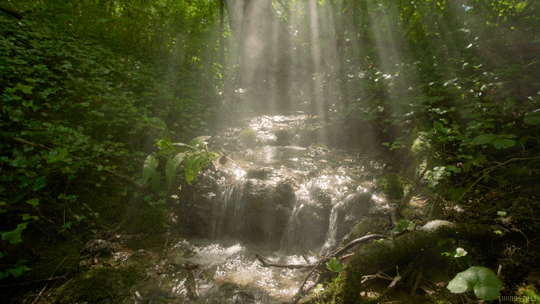
JUNE
KALENDS
1st June
Origins: Ancient Greece/Rome
Observed by: Hellenic/Roman polytheists
Anniversary of temples to Juno Moneta (protectress of money, her temple was where coins were made), Mars/Ares (God of war), and the Tempestates (goddesses of storms).
ARRHEPHORIA
3rd Skirophorion (translates to mid-June)
Origins: Ancient Greece
Observed by: Hellenic reconstructionist
Feast in celebration of Athena and fertility.
MIDSUMMER/SUMMER SOLSTICE
21st June
Origins: Agricultural holiday/longest day observed for centuries by many civilisations. Christianity can date to as early as C4th
Observed by: Wiccans/Germanic neopagans (as Litha), Asatru/Heathens, Druids (as Alban Hefin)
One of the main four holidays in the Wheel of the Year and popularised by Wiccans and neopagans as Litha which is taken from the Anglo-Saxon words for June/July, this is the longest day of the year and the middle point and sometimes considered the beginning of summer.

JULY
REMEMBRANCE FOR UNNR/AUD THE DEEP MINDED
9th July
Origins: C9th Iceland
Observed by: Ásatrú, Heathens, Norse reconstructionist
Aud was a traveller in the 9th century moving between Dublin, the Hebrides, Orkney, and finally Iceland following the deaths of her husband and son. This day is to honour her memory.
HERACLEIA
July/August
Origins: Ancient Greece
Observed by: Hellenic polytheists
Festival dedicated to Heracles the demigod and his death, involving feasting and celebration.

AUGUST
LUGHNASADH/LAMMAS
1st August
Origins: Celtic Britain (Ireland, Scotland, Isle of Man)
Observed by: Wiccans, Neopagans, Christians (as Lammas), Ásatrú (as Freyfaxi)
Named for the god Lugh, this festival is one of the Celtic harvest festivals and marks the beginning of the harvesting months. It was celebrated by climbing mountains, bull sacrifice, offerings, and feasting. Handfasting is commonplace with Wiccans in modern times.
REMEMBRANCE FOR REDBAD, KING OF THE FRISIANS
9th August
Origins: C7th Frisia (area of Germany/Netherlands)
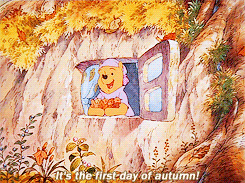
SEPTEMBER
NOUMENIA
8th September
Origins: Ancient Greece
Observed by: Hellenic polytheists
Celebration of new Hellenic lunar month. Offerings of honey and incense made to household deities.
REMEMBRANCE FOR HERMANN THE CHERUSCAN
9th September
Origins: C9th CE
Observed by: Heathens, Ásatrú
Hermann the Cheruscan, also known as Arminius of the Cherusci tribe, led the defeat against the Romans at the Battle of Teutoburg Forest and is lauded for saving Eastern Germanic peoples from being conquered by the Roman Empire.
AUTUMN EQUINOX (NORTHERN HEMISPHERE)
22nd September
Origins: 1970s neopaganism
Observed by: Wiccans and Neopagans (as Mabon), Ásatrú (as Winter Finding)
Named Mabon by prominent Wicca and Neopagan Aidan Kelly, after the Welsh mythological figure Mabon ap Moldron, the autumn equinox is one of the harvest festivals and marks the beginning of autumn in the northern hemisphere. Mabon is a relatively new pagan holiday not based on any specific historical festival, but traditionally people around the world would celebrate some kind of harvest festival around the end of September/beginning of October.
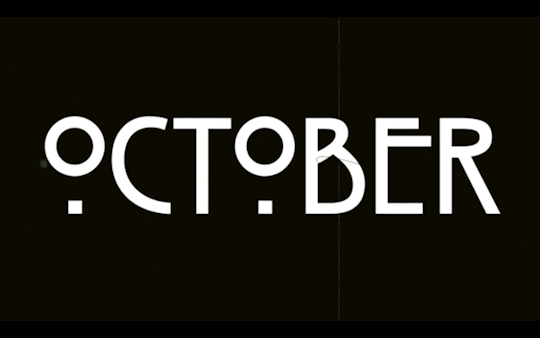
OCTOBER
PYANOPSIA
7th October
Origins: Ancient Greece
Observed by: Hellenic polytheists
Pyanopsia, or Pyanepsia, is a festival to honour Apollo, one of the most important deities, God of music, the sun, knowledge, healing, and archery - amongst other things. During the festival, two special offerings would be placed on doorways and carried to the temple. These offerings were a bean stew, and an olive branch wrapped in wool with honeys, pastries and seasonal fruits hanging from it.
REMEMBRANCE FOR LEIF EIRIKSSON
9th October
Origins: C10th CE
Observed by: Heathens, Ásatrú, Norse pagans
Remembrance for Leif and his sister Freydís Eiríksdóttir, children of Erik the Red, who are cited with being the first Norse explorers in North America.
THESMOPHORIA
12th-14th October
Origins: Ancient Greece
Observed by: Hellenic polytheists
Festival held in honour of Demeter Thesmophoros, goddess of agriculture, and her daughter Persephone, goddess of death and life, Queen of the Underworld. Celebrated primarily by women, this festival is linked with fertility, and we know very little about it due to its secretive rites. It is thought that it involved the sacrifice of pigs (although some sources say women), and abstinence.
REMEMBRANCE FOR ERIK THE RED
28th October
Origins: C9th CE
Observed by: Heathens, Ásatrú, Norse pagans
Erik the Red, probably named for the colour of his hair and beard, was the first permanent European settler in Greenland. His children were explorers too, who went to America, and although his wife converted to Christianity, Erik remained faithful to his Norse pagan gods.
SAMHAIN (HALLOWE'EN)
31st October-1st November
Origins: Gaelic - Scotland, Ireland, Isle of Man
Observed by: Celtic pagans, Neopagans, Wiccans
Pronounced SOW-in (sow rhyming with cow), Samhain was originally a harvest festival marking the beginning of winter. The day itself is the 1st November, but celebrations begin on October 31st, and this has become the accepted associated day. It's a festival of the dead, where the síthe, fae and spirits, can enter this realm from their own. Wiccans talk of a 'veil' thinning, meaning the boundary between worlds. Similar death related festivals around this time can be noted in other faiths from across the globe, and of course in the modern Hallowe'en.
WINTER NIGHTS (VETRNAETR), ÁLFABLÓT/DÍSABLÓT
31st October
Origins:
Celebrated by: Heathens, Ásatrú, Norse pagans
Winter Nights is mentioned in the Ynglinga Saga as one of the three greatest blessings of the year, the other two being Sigrblót in April, and þorrablót in late Jan/early Feb. Winter Nights is the celebration of the beginning of the winter season; Álfablót is a sacrifice to the elves, and Dísablót a sacrifice to the female spirits (dísir) and Valkyries.
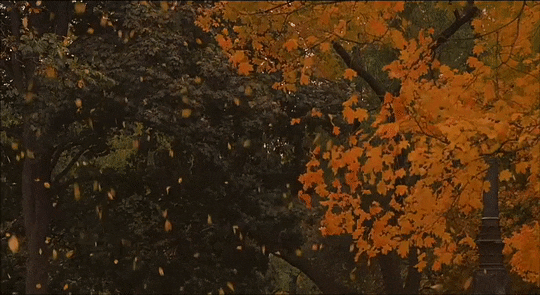
NOVEMBER
REMEMBRANCE FOR SIGRID THE HAUGHTY
9th November
Origins: C9th CE
Observed by: Heathens, Ásatrú, Norse pagans
It is not actually known whether Sigrid Storråda, or Sigrid the Haughty, was an actual historical figure, an amalgamation of a few, or simply a myth. The lore goes that she was proposed to multiple times and turned down many but went on to orchestrate conflict when a potential suitor - Olaf Tryggvason, King of Norway - attempted to convert her to Christianity.
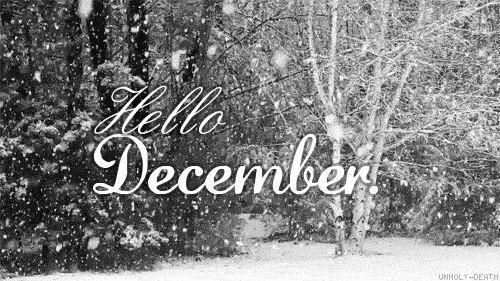
DECEMBER
REMEMBRANCE FOR EGILL SKALLAGRÍMSSON
9th December
Origins: C10th CE
Observed by: Heathens, Ásatrú, Norse pagans
Day celebrating the poet, farmer, and berserker Egill Skallagrímsson, who is recalled in The Icelandic Sagas by Snorri Sturluson. Egill is known for his many killings and escaping death by writing an epic poem after being captured when washing up on our Northumberland coastline.
SATURNALIA
17th - 23rd December
Origins: Ancient Rome
Observed by: Roman polytheists, some Hellenic
Like Yule and Lesser Dionysia, Saturnalia was the Roman winter festival celebrating the coming return of the sun and honouring the god Saturn. The standard feasting and drinking feature, and slaves would be treated as equals like Dionysia. Saturnalia is another festival cited as being picked up by Christians and used as inspiration for Christmas.
WINTER SOLSTICE (YULE/MIDWINTER)
21st December
Origins: Germanic nations, as early as C4th CE
Observed by: Norse pagans, Wiccans, Neopagans, LaVeyan Satanists, Ásatrú, Heathens, many Germanic nonpagan peoples
Yule is the midwinter festival known commonly among pagans as a time for feasting, being with loved ones, remembering ancestors, and looking forward to the return of the light and warmer days. Many pagans will celebrate Yule for more than one day, some celebrating a week either side, some for longer, up to two months, and some for twelve days afterwards. True Yule would have originally been in January for midwinter, but King Haakon the Good
moved it to coincide with the Christian celebrations in the 10th century, as told in the Ynglinga Saga.
On the 24th of December, Anglo Saxons are said to have celebrated 'Mothers Night' honouring female ancestors.
RURAL/LESSER DIONYSIA
End of December/beginning of January
Origins: Ancient Greece
Observed by: Hellenic polytheists
Smaller festival honouring the god Dionysus (Greater Dionysia took place in cities at the end of winter). Feasting, mask wearing to stop distinction between classes so that everyone could feel equal, sacrifices, parades, and phallic display were all used to celebrate.
#wheel of the year#wiccan#pagan#heathen#greek#mythology#holidays#religious holidays#pagan holidays#non-Abrahamic holidays#witch#witchcraft#witchblr#pagan wicca#polytheism#paganism#witches#witch holidays#witches holidays#pagan witch
98 notes
·
View notes
Text
(Edit added below)
Is there anyone interested in a witchcraft newsletter or something of the like? I'm thinking about maybe starting a once a month newsletter that goes over the moon cycles of said month, correspondences, witchy holidays/days of observation, etc. Maybe even adding a section on crystals or herbs, interviews with other witchy creators. I've got a good amount of spare time on my hands, so it might be pretty fun. I do also want to add beginner friendly sections with tips and tricks for newbies. Let me know if anyone is interested
#green witch#pagan#wicca#magick#witchblr#green wicca#pagan witch#witchcraft#witchythings#witch#witchcore#witch community#pagan tumblr#spirituality#witchy#paganism#crystals#pagan holidays#paganblr#witches of tumblr#witchlife#beginner witch
138 notes
·
View notes
Text
Wiccan Holidays
Here are the eight Wiccan holidays, known as Sabbats, along with their meanings and dates:
Samhain (pronounced "sow-in") - October 31st: This is the Wiccan New Year, a time to honor ancestors and loved ones who have passed away. It is also a time when the veil between the physical and spiritual worlds is believed to be thinnest, making it easier to communicate with spirits.
Yule - December 21st: The winter solstice marks the longest night of the year and the return of the sun. It is a time of introspection, renewal, and rebirth.
Imbolc (pronounced "im-bulk") - February 2nd: This is a time to celebrate the coming of spring and the awakening of the earth. It is also a time to honor the goddess Brigid, who represents inspiration, creativity, and healing.
Ostara - March 20th: The spring equinox is a time of balance between light and dark, and a time to celebrate new beginnings and growth. It is a time to honor the god and goddess as they prepare to conceive new life.
Beltane - May 1st: This is a celebration of fertility, sexuality, and the coming of summer. It is a time when the veil between the physical and spiritual worlds is thin, making it a powerful time for magic.
Litha (pronounced "lith-ah") - June 21st: The summer solstice marks the longest day of the year and the height of the sun's power. It is a time to celebrate the abundance of nature and the god's strength.
Lammas - August 1st: This is a time to honor the first harvest and the god's sacrifice, which allows us to have food and sustenance. It is a time to reflect on gratitude and abundance.
Mabon - September 21st: The fall equinox is a time of balance between light and dark, and a time to celebrate the second harvest. It is a time to reflect on the changing seasons and to prepare for the coming of winter.
These holidays are observed by many Wiccans and are a way to connect with the natural cycles of the earth and the divine energies that surround us.
{I myself am not a practicing Wiccan. I am just posting this for educational purposes & to share information to my followers}
#wicca#wiccan#wiccan holidays#wiccan traditions#wiccalife#witchblr#witchcore#witchcraft#witchlife#white witch#beginner witch#witch tips#grimoire#spirituality#book of shadows
201 notes
·
View notes
Text



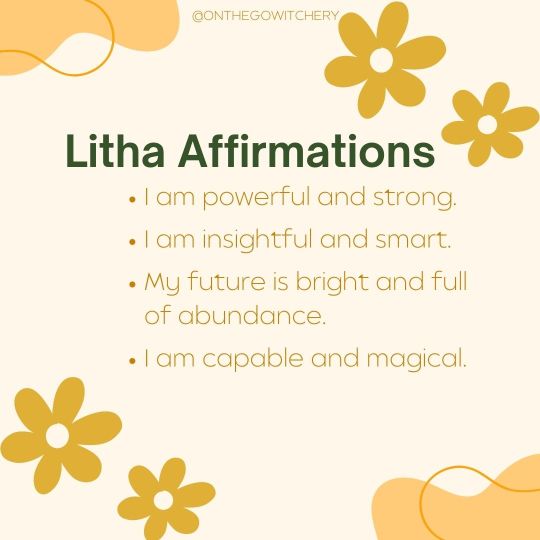
Onthegowitchery
#pagan#holiday#litha#midsummer#summer solstice#witchcraft#witchblr#witch#spells#magic#baby witch#wicca#magick#village witch
142 notes
·
View notes
Text
HAPPY SAMHAIN🍂🎃

HAPPY HALLOWEEN!🎃👻

#witchblr#witchcraft#witch#baby witch#witch community#paganism#pagan#pagan witch#paganblr#magick#nature#magic#samhain#halloween#holiday#wiccan#wicca#pagan wicca
56 notes
·
View notes
Text
Pagan altar inspiration pt. 2


Midsummer altar, Mabon altar
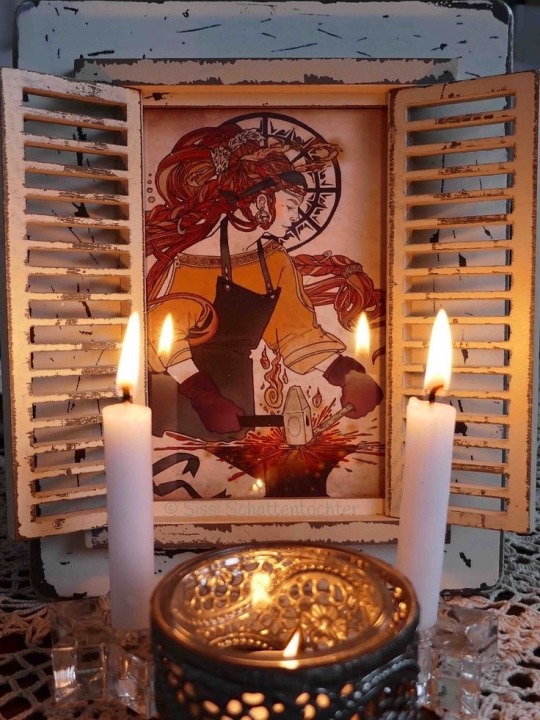
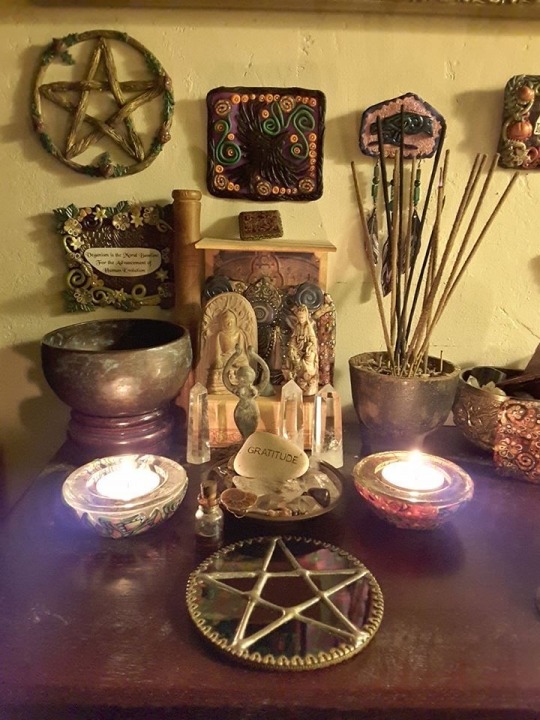
Brigid altar, God and Goddess gratitude altar


Pan altar, wiccan Yule altar


Altar to Ishtar, Lammas Altar


Shrine of Hekate, Litha Altar
#altars#pagan altar#paganism#witchcraft#pagan holidays#witchy#aesthetic#deities#deity work#yule#lammas#litha#wheel of the year#polytheism#devotional#magic#wicca
429 notes
·
View notes
Text

🍞🍄🍮🫒🍾🍯🥚
#winter solstice#winter foods#winter witch#winter aesthetic#winter holidays#sabbaths#wheel of the year#wiccan#wiccablr#green wicca#pagan wicca#wiccamagic#wiccalife#wicca#witchy#witchythings#witchy vibes#witchcore#witch aesthetic#witchblr#green witch#witch community#witch blog#baby witch tips#witch tips#beginner witch#witches of tumblr#witch stuff#witch life#witchy aesthetic
33 notes
·
View notes
Text
Oh yeah, btw, jesus's birthday is in around june. The only reason anyone celebrates it in december is because back in the day, (like way back) the catholic church didnt like that the pagans had these big winter holidays so they decided to replace it with the birth of their saviour, or "christ's mass" (christmas).
Me, as a pagan wicca, I know about things such as these. Much like how halloween was a celtic festival, but the catholic church didnt like that so they replaced it with "all saints day," also known as "all hallows day," the day before which being "all hallows eve," which you may recognize as latter-day halloween's origin phrase.
29 notes
·
View notes
Text

41 notes
·
View notes
Text
The Wheel of the Year: A Comprehensive Guide.
The Wheel of the Year is a popular concept in neo-pagan circles and for beginner witches, but how much do you really know about it?
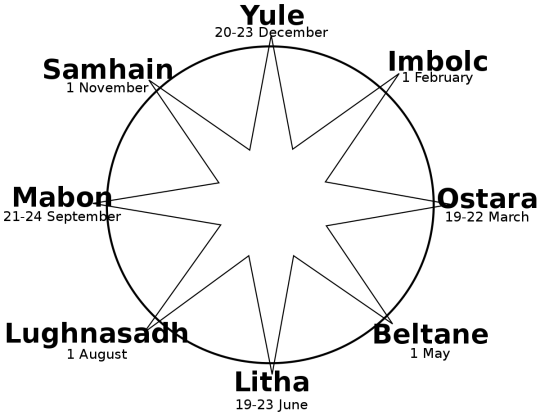
If you're doing research on the Wheel of the Year (WotY) you should know that it is mostly made up by Gerald Gardner and a few others based on a proposed wheel of the year from Jacob Grimm (a mythologist, folklorist, and scholar) in the mid-1800s. The holidays are set on solstices, equinoxes, and at the mid-points of these celestial events throughout the year.
The holidays aren't fake, per se, but some of their names and traditions are, at least in the context of the WoTY.
I urge you to research these holidays in their own original context and learn about their cultural relevance.
A Short History
The WoTY holidays are based on actual holidays, many of them with their original (or close to their original) names such as Samhain, Bealtaine, Lughnasadh, and Imbolc which were celebrated by the Celts, specifically the Irish. The spelling of these holidays varies depending on where they were celebrated.
Lughnasadh is often wrongly conflated with the English holiday Lammas, another name that the Wiccans call the holiday. Lammas, however, is a holiday in its own right just as Lughnasadh is.
Yule was celebrated by Germanic people (and later Anglo-Saxons) and went by the name Old Norse jól or Old English geol. We don't know exactly when it was celebrated but it was eventually assimilated into the Christian holidays and it would be rescheduled to around that time as well after the Christianization of Norway.
Ostara is the name given to the spring equinox, named after the Anglo-Saxon goddess Eostre (who is a can of worms in and of herself whether she existed pre-Christianization or not). Ostara is another name coined by Jacob Grimm in his book Teutonic Mythology.
Litha takes place on the summer solstice and is conflated too often with Midsummer, a holiday celebrated widely (though very differently) around the world. The name comes from a book by Bede which describes a 12-month lunisolar Saxon calendar. Aidan Kelly, who named the holiday along with Mabon and Ostara, writes about this in his post "About Naming Ostara, Litha, and Mabon".
Mabon is made up, named after a Welsh god, but the date is that of the Autumnal equinox which was actually celebrated or at least observed by various cultures.
So what now?
No one is saying that you can't celebrate these holidays, but if you're going to do so then it's only respectful to learn about their history and original cultural context. You can add your own traditions to these holidays and incorporate them into your life and into your craft, but keep in mind where they originate and be respectful of their history.
Also, if you don't want to celebrate the Wiccan versions of the holiday, consider calling them by their other/original names; Mabon being the fall or autumnal equinox, Ostara being the spring or vernal equinox, and Litha being the summer solstice.
How do I research them?
Honestly, Wikipedia is a great place to start, it gives you a general idea and a bunch of sources and references at the end of each post. If you're looking for research tips check out my post on witchy research tips!
To my fellow occultists and witches: If you have anything to add to this feel free to comment or reblog with your info.
Edit: If you're looking for an Irish-accurate Wheel of the Year, check out this post by @fiagai-cnuasaitheoir !
359 notes
·
View notes
Text
Secular Celebrations - Midsummer

After Beltane comes Midsummer, which some also call Litha, mid to late June. I call it “probably already too hot to go outside.” I’m not exactly a summertime person to begin with and I live in Virginia, in the middle of a swamp. So the rest of you can enjoy Midsummer. I’m going to be spending it indoors where the air conditioning is.
Midsummer is the summer solstice, the middle of the growing season, the highest point of high summer. It’s a time to celebrate the hard work we’ve done, take a bit of ease while the weather is pleasant, and have a good romp before we have to start bringing in the harvests in August. If you work with solar magic or the Fair Folk, this is your holiday. Both of these themes run deep and strong through Midsummer, along with the urge to get outside and revel in the beauty of nature at peak flourish.
So enjoy Midsummer first and foremost by getting outside...if you can. If it’s too damn hot, yanno, be realistic. But at least make an effort if you enjoy the hotter weather and it’s not dangerous to be out. Go to your favorite park, maybe go to the beach, go hiking, go to a pick-your-own fruit farm, have a picnic, attend a fair or a carnival, do some stargazing. All this assumes a lot about public safety since we’re still living in the COVID era, so use your good judgement. If it’s not safe to be around crowds, try to focus on solo activities or things you can do in the safety of your home or your backyard.
This is another good time for herb-picking. If you have a garden, your plants should be producing by this point, and you can start pruning your plants and drying those trimmings for use in your craft. This is actually my favorite part of the summer. I love putting up those bundles of plants and flowers to dry, I love the look of them in my home, and I love the satisfaction of putting the dried material into jars for storage. And hey, if you’re not growing anything, you can still enjoy this by picking up fresh herbs from the supermarket or the local garden store and drying them.
You can also go herb gathering like I mentioned for Beltane, since different plants will be in season. Again, always observe permission and best practices if you’re going to do this. And always make sure you label your bundles and your jars for easy identification.
On a practical note, if you’re going to be doing things outside for Midsummer, always make sure you wear sunscreen and adequate clothing to avoid too much UV exposure, including a face covering. Remember to hydrate properly throughout the day, be careful with your alcohol intake, and if you start to feel tired or woozy, or if you stop sweating, get out of the sun IMMEDIATELY. Heat exhaustion and heat stroke are no joke, witches. Take care of yourselves out there.
And speaking of herbs and ways of keeping cool, one of the things I really enjoy doing in the summertime is making magical iced teas. I know some of my overseas listeners might be blinking in confusion right about now, so if you’ve never heard of this, let me enlighten you. In the US, particularly in the South, we’re very fond of iced tea. Now, that doesn’t mean cold tea, it’s tea that’s been sweetened and chilled, and it’s usually served over ice with lemon or mint leaves, depending on the recipe. This is a fun and easy herbal potion that anyone can make. You just need a pitcher of hot water, some herbal tea bags, some sugar or honey, and whatever flavorings you want to add.
Using several teabags or a big pouch of looseleaf tea, mix up a batch of tea that’s a little stronger than you’d usually make for a hot cuppa. Stir in sugar or honey until it’s as sweet as you like it - we usually go a step or two sweeter than you’d think. Then add whatever flavorings you like. And you can use just about anything for this. I’m partial to a nice blend of chamomile and peppermint with a good dollop of honey, or white tea with jasmine, or spearmint and elderflower, or hibiscus and raspberry. Lavender and lemon is another popular recipe, if you can get your hands on culinary lavender. (And yes, there IS a difference between lavender grown for the kitchen and lavender grown for aromatherapy purposes, so shop carefully.) Feel free to make drinks that correspond to magical purposes, too. Health, wealth, happiness, whatever you like. Sweet iced potions? Yes please!
This can be stretched to alcoholic drinks too, if you’re partial. I mean, what are we even doing with our craft if we’re not stirring spells into sangria or joining the midnight margarita club, right? My husband makes a delightful little cocktail he calls a Gardener’s Tonic - basically a gin and tonic with muddled sweet basil and lime juice and a slice of cucumber. Just make sure that when you’re enjoying your alcoholic alchemy, you’re doing so responsibly.
So once you’ve got your drink of choice and you’ve had a chance to relax, look to your homestead. Tend that garden, like I mentioned before. Attend to any pest problems you might be having, or any home repairs that might need doing. Try not to put things off. Once autumn arrives, you may find that you’re too busy. Reorganize your witchy supplies. If you’ve got new material or new tools coming in, try to declutter and get rid of anything that’s gone stale or sour, or anything that’s used up. Check your jars for signs of mold and give your accoutrements a good cleaning.
If you feel that kitchen witch itch, there’s a cream for that….it’s in the fridge next to the milk. (I apologize for NOTHING.) You can check on the beverages you started back around Beltane, or start a batch if you didn’t do one in the spring. You can start a sourdough, since that seems to be all the rage right now, or make preserves and jams with those early fruits and berries. Make food or homemade sweet with local produce and local honey. Oh and bless the bees and the pollinators while you’re at it! Bless their little hearts, they bring so much sweetness to the world, they deserve thanks for their hard work.
Midsummer is a big holiday for picnics, so if you can have one, definitely do it, even if it’s just on your back porch. If you happen to have a fenced yard and a tent to work with, maybe try an overnight campout just for fun. My dad used to do this all the time when my brother and I were kids. We’d set up a tent in the backyard, he’d drag out a TV and VCR on extension cords, and we’d stay up half the night watching movies and eating junk food. Hey, we were suburban kids, my dad’s idea of “roughing it” was having no remote for the TV. It was super fun, and if you can manage something like this, I definitely recommend it to witches with little ones. Lot of good memories there, if they’re inclined to such things.
Of course, summer isn’t all clear skies and sunshine. Sometimes it rains. But heck, that can be just as much fun. Apart from the obvious option of gathering the rainwater for magical purposes, have you ever gone out in the rain on purpose? When it’s warm out and the rain is coming down in nice fat drops and you’re wearing stuff that can stand a little soaking, few things are more fun than running around and getting absolutely drenched. I’ve got a few fond memories of walking in the woods during rainstorms with my bestie from middle school. There’s a saying that goes, “Life isn’t about avoiding the storms, it’s about learning to dance in the rain.” If there’s not a danger of lightning, I definitely recommend giving it a try. It’s really kind of exhilarating.
Midsummer is the longest day of the year. It’s the day when we see the most light, the earliest sunrise, the latest sunset. Meditate on how you can bring more light and positivity into your life, and how you can have a positive impact on the lives of others, on your community, and the world in general. Think about your productivity, your projects, your path to personal growth. How are things going? Is there anything that feels stuck that needs to be addressed? Where can you modify your outlook to something more optimistic, and where do you maybe need to take off the rose-colored glasses and be more of a realist? All things to contemplate while you’re sipping that magical iced tea potion.
Other Posts In This Series:
Imbolc
Spring Equinox
Beltane
Midsummer
Lughnasadh
Autumn Equinox
Samhain
Yule
If you’re enjoying my content, please feel free to drop a little something in the tip jar or check out my published works on Amazon or in the Willow Wings Witch Shop.
The Hex Positive podcast is a proud member of the Nerd and Tie Podcast Network.😊
#witchcraft#witchblr#wicca#wheel of the year#holidays#summer solstice#midsummer#litha#baby witch#secular celebrations#Hex Positive#Midsummer is June 20-22 - you haven't missed it!
764 notes
·
View notes
Text
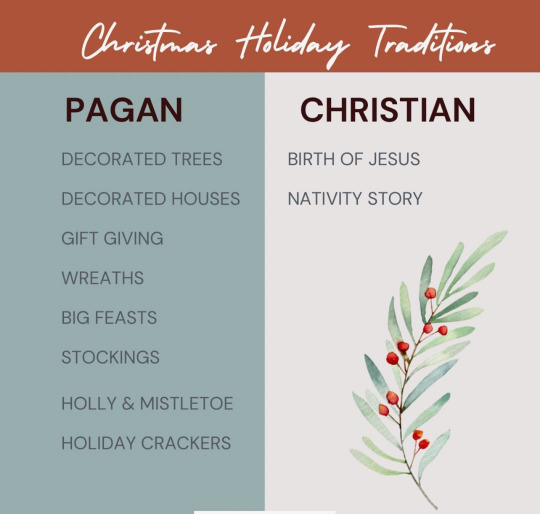
Mmmmmm you tell people not to follow witchcraft, but yet you guys steal something and do so many things from that community? You guys couldn’t come up with something new ? Just stating a fact 💯 #wicca #pagans #witchy #pagansarethereasonfortheseason #true #holiday
21 notes
·
View notes
Text
December 24 Ritual
Finnish people believe in spirits of the dead revisiting their homes today and light white candles on their graves to help them find their way.
to honor those who used to live in your home, light a white candle yourself and enchant it :
spirits, you are welcome here
rejoin this home and have no fear
we're glad to have you--you may stay
until you need to fly away
The Celtic Tree Month of Beth starts today. This month is dedicated to the birch tree, symbolizing birth and purification.
start the day with a salt bath to spiritually purify:
salt of power, salt of might
rid my life of what's not right
release all negativity
cleanse me now, salt. Blessed be
#wiccalife#pagan wicca#pagan witch#wicca#paganism#wiccan#witch#witchcore#witchcraft#pagan#merry yule#yuletide#yule log#yule#happy yule#winter solstice#pagan holidays#holiday#christmas#xmas#holiday season#festive#ritual#magick#altar#magic#spell#spells#spellcasting#spellcraft
20 notes
·
View notes
Text




Happy Yule / Winter Solstice dear ones!
Though we dread the snow and the cold. Today signifies that lighter, warmer and longer days are afoot.
Use today's energy as you see fit. Celebrate your accomplishments, for you have done great.
Onthegowitchery | Etsy | IG | FB
Follow me on TikTok @Villagewitchery
#witchcraft#witchblr#pagan#witch#spells#magic#baby witch#wicca#magick#village witch#winter solstice#yule#affirmations#pagan holidays
169 notes
·
View notes
Text
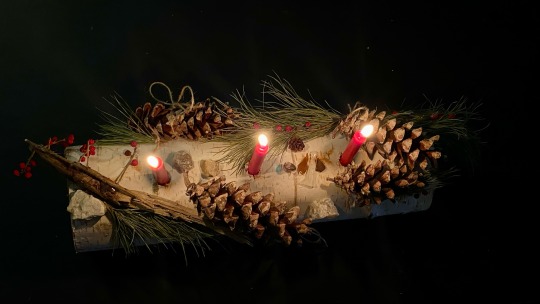
Happy Yuletide, Merry Christmas, Happy Winter Solstice everyone!🤍🎄🪵
#witchblr#witchcraft#witch#baby witch#witch community#magic#magick#Yule#Yule log#Yuletide#winter solstice#happy winter solstice#witchcraft community#pagan#Wicca#holidays#holiday#celebration#christmas#merry christmas
36 notes
·
View notes